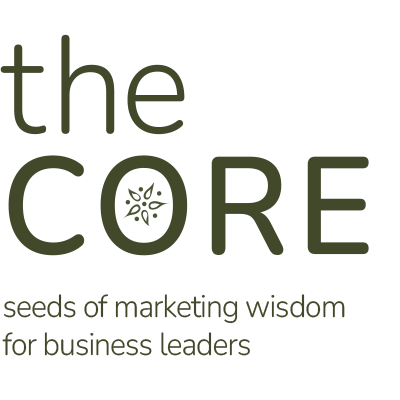“But, we have to cut something.” You may be feeling as though marketing is the easiest line item in your budget report to slash. We get it. As we’ve worked through this recession, Green Apple has made cuts of our own to ensure that we’re financially strong enough to serve our customers. We’re right there with you. However, cutting your marketing budget can hurt your business long-term, even when it might help it slightly in the immediate future.
To ensure that your business can continue serving its customers, you must consider a few key points. Here are seven reasons to reconsider reducing your marketing budget in a recession.
1. What if your competitors don’t?
You may consider cutting your marketing budget, but if your competitors don’t, where does that leave you? When you reduce your marketing budget, you decrease how and how often your customers see you—allowing your competitor to move in.
2. Your marketing team can help your customers support you.
The return on investment for your marketing strategy is still valid during a recession. While things are “normal,” your strategy is to drive sales and build relationships; however, during a recession, you are more focused on the relationship-building side of things and can keep your customers invested in your success. They love you as much as you love them, and they don’t want to see your business struggle. Your marketing team can help you show the right amount of vulnerability and transparency, while still sending the message that you are here to help.
3. Your marketing team protects you.
Clients often think about marketing as advertising, but it’s so much more. Your marketing team is telling your brand’s story, and that story must be shaped to align with the social climate—so as to not be insensitive or offensive. Using COVID-19 as an example, companies needed to quickly shift their messaging strategies to be sensitive and empathetic. Having a team on your side that can help shift and shape your message allows you to support your audience, while keeping your brand top of mind.
4. You don’t want your customers to feel abandoned.
Your marketing strategy strengthens your relationship with your audience. A reduction in your budget can leave your customers wondering where you went—or worse, if your business is in jeopardy of shutting down.
You will, of course, be there for your audience in a different way during a recession. Your messaging will focus on how you’re taking care of customers as the tides change. Marketing can tell your audience what you’re doing to keep their best interests in mind, strengthening their trust in your brand.
5. It may be time to launch that new product.
You have less competition during a recession, as other companies are focusing on staying afloat. They aren’t putting their time and effort into launching new products or growing their business. If you are in the position to, and you have ideas ready to launch, work with your marketing team to put your new product out into the world.
6. You will not bounce back as easily.
If you reduce your marketing efforts, it leaves you in a difficult position when you’re ready to bounce back. You’ve spent a great deal of time and money growing your brand’s reach. Rather than scaling back, discuss a strategy with your marketing team to find ways to keep your reach consistent. Once the economy is on an upswing, you will appreciate not having lost months—or years—of progress.
7. It can take you off course to meet your goals.
Even amid a recession, you still want to move forward. Your marketing team can help you keep your goals in mind and find new strategies to meet them. Don’t underestimate a marketing team’s versatility and the potential to keep your business growing, even when the economy is less than ideal.
Talk Strategy Before You Make Cuts
Before you decide on your budget, discuss all the options with your marketing team. They can likely work with you to achieve your goals, even with necessary budget accommodations. Your relationship with your marketing team should be transparent—they want to see you succeed, too, and will do everything they can to make that happen.
Ready for a marketing team with your best interests at heart? Contact Green Apple Strategy today to schedule a consultation.






